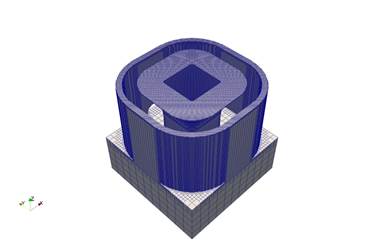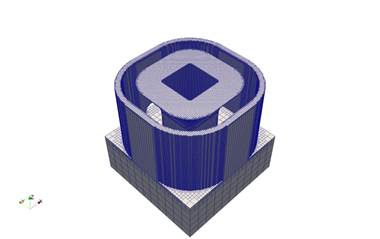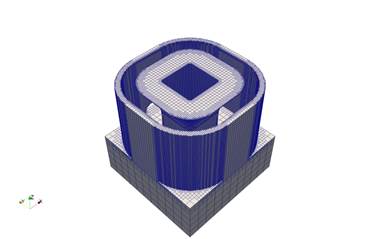*PBLR
i1
i1: i*4: number of generations coarsened per activation layer. Default 1.
This option allows using small element size (defined by *PBPA) to account for fine geometry details or thin sections, and activating layers thicker than the finest element size.
The activation thickness is equal to n · t · 2i1, where n is the number of layers per group and t is the powder layer thickness (i2 and r1 values in *PBPA card). The effect of the *PBLR card is illustrated in the figures below, where in Figure a it is shown that the added group of elements is composed of fine elements without the *PBLR card. The adaptive coarsening allowed by *PBLR is shown in Figures b and c. Note that single core run times can be quartered between the No *PBLR and *PBLR = 2 simulations, however this coarsening will reduce the accuracy of the simulation.
Best Practices: *PBLR = 1 should achieve a fair compromise between speed and accuracy for most geometries. Larger geometries should use values of *PBLR = 2, extremely large builds,*PBLR = 3. When performing quantitative stress via *PPLA or heat treatment simulations using *STRF, lower values of 0 or 1 should be used to ensure the mesh is adequately converged. Good FE practice requires a mesh convergence study for each model.

(a) No *PBLR, *PBPA = 5, Run time = 13965 s

(b) *PBLR = 1,*PBPA = 5, Run time = 6462 s

(c) *PBLR = 2,*PBPA = 5, Run time = 3213 s